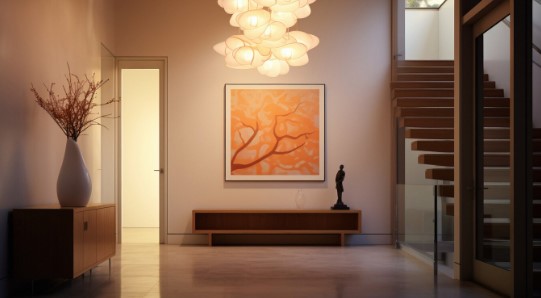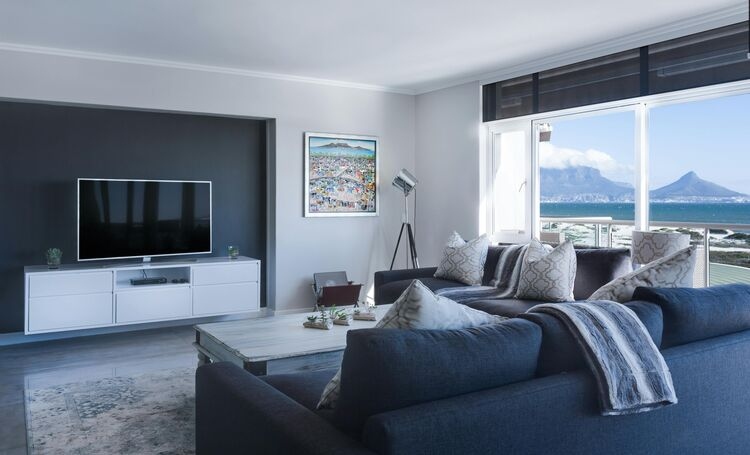Technology has become a powerful force that is changing and dictating the way we live in today’s society — and it even affects the design of our houses. The most fascinating trend that has emerged is the incorporation of AI interior design. This contemporary method integrates the use of artificial intelligence and decoration. Consequently, the homeowners from different regions in the U. S. are experiencing the transformation of their rooms in faster, smarter, and less expensive ways.
AI Interior Design – What is it?
AI interior design leverages the application of machine learning and advanced software to understand your style, analyze the room, and generate a unique layout. Furthermore, it has the capability of creating mood boards, making furniture suggestions, and even producing photorealistic renderings of your space.
For instance, if you would like to see an updated version of your room in different styles, some platforms allow you to upload a picture of it and then, in a few seconds, you will see the revamped version. Others will let you type in a request such as “modern rustic bedroom,” and the AI will present you with a selection of options.
In other words, AI interior design allows you to envision and set up your house — all without the assistance of a professional designer.
U. S. Homeowners’ Affection for AI Interior Design
There are a few factors behind the increasing acceptance of AI design tools, primarily among U. S. homeowners.
1. Speed and Convenience
The process of traditional interior design is lengthy. Numerous meetings, time spent on samples, and modifications can take several weeks. The AI-enabled tools, on the other hand, will come up with design ideas almost instantly. Most of these tools offer instantaneous design suggestions, thus speeding up the process considerably.
2. Lower Costs
The cost of hiring an interior designer can be quite steep. In contrast, AI tools are often more affordable and within reach for a wider range of customers. The majority of them have a monthly subscription or a one-time fee, which makes them quite suitable for people on a budget.
3. Personalization and Flexibility
Every day, AI design tools are getting better at helping you find your style. They allow you to play, such as trying out various looks, changing colors, and experimenting with furniture arrangements. Plus, the software assesses the layout and lighting of your room, making the suggestions spot on.
4. Helps with Selling Your Home
If you’re getting ready to sell your house, virtual staging powered by AI can make your property more appealing to potential buyers. Realtors and sellers use AI to create realistic renderings of rooms, thus increasing the appeal of the listings. It is not uncommon for staged properties to sell quicker and at a higher price than non-staged ones.
5. Easy for Beginners
You don’t have to be very knowledgeable to use it. Most applications are designed for easy use, and they handle all the heavy lifting behind the scenes. You will receive design advice without needing to go through any complex training.

Consider the Benefits and Limitations
Before going for it, it is necessary to have a thorough understanding of the advantages and disadvantages of AI in interior design.
Key Benefits
- See Before You Buy: With AI, you get to see the future of your home — colors, layout, and lights — before making any purchase decisions.
- Explore Multiple Designs: You can produce many variations of a single room until you get the one that resonates with your taste.
- Smarter Space Planning: Many tools will recommend layouts that support the flow and function of your room.
- Boost Home Value: An Interior with a good design will be able to captivate even more buyers, especially in the case of selling your house.
Things to Watch Out For
- AI isn’t a Human Designer: While AI is a great help, it can miss some things like structural problems, building codes, or solutions that a real designer would tackle.
- Some Results May Be Unrealistic: The AI might sometimes suggest furniture that is too big for your space or put things in awkward places.
- Construct vs. Illustrative: Witnessing a design via your monitor is one thing. Transforming your home into that design is a whole other story.
- Style Over Function: AI typically prioritizes aesthetics. If a human designer factors in comfort, lifestyle, and practicality, an AI system will not.
How to Select the Most Effective AI Interior Design Tool (U. S. Edition)
How can you find the best one among the numerous tools available? Here are a few suggestions!
- American Styles Support: Platforms offering American styles such as farmhouse, California coastal, or New York loft should be your go-to.
- Integration with Real Furniture: Some platforms feature designs that come with actual buyable items—usually from U. S. vendors.
- High-Quality Uploads: The quality of the picture you upload affects the output of the AI. Therefore, use well-lit, straight-on photos.
- Downloadable Results: Check if your design can be saved or printed for future reference.
- Pricing That Fits Your Budget: Some tools offer free trials while others charge a fee per room or a monthly subscription.
- Privacy and Security: Please confirm how your information and pictures are kept safe.
- Customization Options: The best tools allow you to modify the designs and make changes according to your specifications.
A Simple 5-Step Guide to Using AI Interior Design
This brief process can be followed while using any AI interior design tool to achieve excellent results:
- Step 1: Take Clear Photos
Capture your room from an angle straight in front of it. Ensure the lighting is proper, and the area is free of clutter.
- Step 2: Define Your Style
Consider what kind of atmosphere you want to create in the room. Would you prefer modern, cozy, industrial, or bohemian vibes? Jot down 2-3 words that best express the interior of your dreams.
- Step 3: Upload and Generate Designs
Choose any AI tool you want to use. Upload your photograph, select your style, and let the AI generate some options.
- Step 4: Review and Refine
Examine each design minutely. Then, you can ask yourself these questions:
- Is the size of the furniture right?
- Are the pathways clear?
- Does it suit my way of life (e.g., kids, pets, guests)?
If needed, modify your preferences and generate once again.
Step 5: Shop and Decorate
Once a design is chosen, prepare a shopping list. Purchase similar items either online or through a physical store. Now, the fun part — start decorating! If required, hire a builder for the major modifications.
What’s Next for AI Interior Design in the U. S.?
AI interior design is a field that is still maturing — and improving. Here are a few pointers on what to look forward to shortly:
- Eco-Friendly Features: Suggestions may soon include environmentally friendly materials and waste-minimizing options.
- Virtual Reality Previews: You will be able to experience your new room in 3D before making any alterations!
- Live Shopping Links: You will be able to click on a couch in your AI design and purchase it directly from a U. S. shop!
- Smarter DIY Tools: Professional-looking results with minimal effort will be the fate of even the least experienced decorators.
Final Thoughts
AI interior design is revolutionizing the way people in the U. S. alter their houses. Regardless of the reason, whether your main aim is to save cost, make the process quicker, or just to experiment with different styles, you will be able to benefit a lot from these tools, as they are very powerful. They offer professional assistance to busy homeowners in terms of aesthetics without the associated cost.
Nevertheless, you should keep in mind that AI is an excellent point of departure. Since complex renovations or highly bespoke designs still require human input, the mixed method is advisable. Henceforth, allow AI to spark your imagination and then bring it to life, one step at a time.


